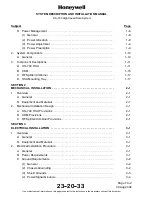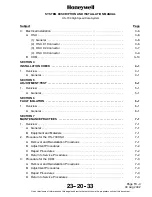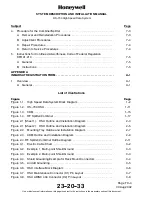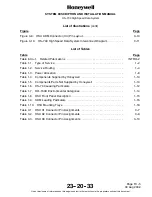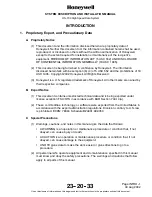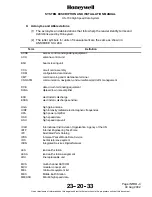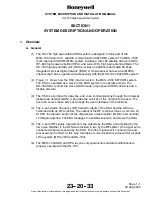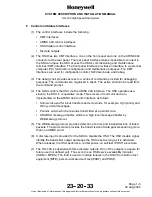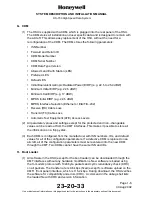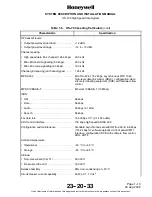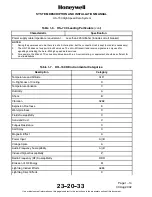
SYSTEM DESCRIPTION AND INSTALLATION MANUAL
HS--700 High Speed Data System
23--20--33
30 Aug 2002
Use or disclosure of information on this page is subject to the restrictions in the proprietary notice of this document.
Page 1--5
F. Control and Status Interfaces
(1) The control interfaces include the following:
•
CMT interfaces
•
ARINC 429 control interfaces
•
HSU disable control interface
•
Discrete outputs.
(2) The HSU has two CMT interfaces, one on the front panel and one on the ARINC 404
connector at the rear panel. The rear panel interface makes it possible to connect to
the SDU and have the SDU access the HSU’s commissioning and maintenance
terminal (CMT) interface. The front panel interface provides an interface to a personal
computer (PC) terminal for configuration and maintenance purposes. The CMT
interfaces are used for configuration control, SW downloads, and debug.
(3) The debug shell provides access to a series of commands provided for debugging
purposes. The commands are organized in shells. The active shell can be read from
the command prompt.
(4) The SDU controls the HSU via the ARINC 429 Interface. The HSU operates as a
slave to the SDU in cooperative mode. Three levels of communication are
implemented on the ARINC 429 control interface as follows:
•
Solo words used for block transfers and solo words, for example, high priority and
timing--critical messages.
•
Periodic words, which are words transmitted at a periodic rate.
•
SDU/HSU message transfer, which is a high level message transfer by
Williamsburg protocol.
(5) The Williamsburg protocol provides detection of errors and retransmissions of failed
packets. The protocol also provides the transmission of data packets spanning more
than one ARINC word.
(6) A discrete input is provided for the SDU to disable the HSU. The HSU disable signal
inhibits the transmitter output and keeps the HSU reset as long as it is activated.
When released, the HSU performs a normal power--on self test (POST) procedure.
(7) The HS--700 is supplied with three discrete outputs. One of the outputs is a spare for
future use (not defined yet). The second is an HSD service availability indicator
(ISDN or MPDS). The third is used to indicate failures in the HSU (from built--in test
equipment [BITE], person--activated self--test [PAST] and POST).


